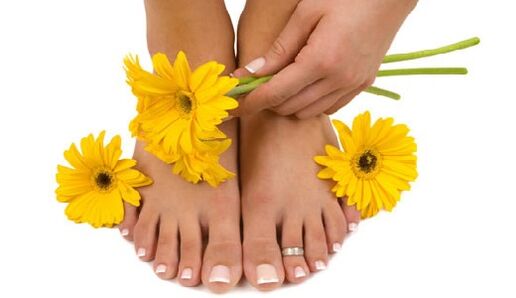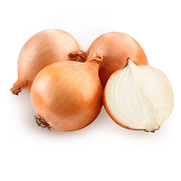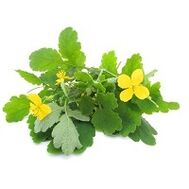
Effective treatment of athlete's foot. Athlete's foot is a fairly common disease, according to statistics, at least up to a quarter of all people on earth suffer from it. To make matters worse, most people don't even suspect they are carriers of the fungus, as it both settles and develops imperceptibly.
The fungus brings not only aesthetic and physical inconveniences, but also synthesizes toxic substances that can accumulate in the body and poison it. That is why it is so important to know about ways to prevent and fight this disease in order to maintain your health. How does the fungus affect the legs and what contributes to it?
Causes of athlete's foot
Easy ways for parasitic fungi to penetrate the skin can be cracks and abrasions between the toes that occur with excessive sweating or, on the contrary, dry feet, all kinds of abrasions from wearing shoes that are too tight, poor wiping of the feet after drinking water . In addition, various endocrine and vascular diseases, varicose veins, diabetes, flat feet, as well as a decrease in immunity or stress can cause a fungal infection.
The fungus is transmitted through close contact with the patient, through items that he used - a towel, a washcloth, shoes, clothes, manicure tools and even a comb. In this context, public areas such as bathrooms and pools are particularly dangerous because heat and moisture are ideal conditions for the development of the fungus. Once in the nail plate, which is almost entirely made up of keratin, the fungus slowly begins to grow and multiply. It gradually takes the place of the nail, dissolves it and continues to spread on the skin. In the case of a fungal infection, cracks and desquamation initially form between the toes, later the skin begins to redden and itch.
signs of athlete's foot
The characteristic signs of athlete's foot are:
- darkening of the nail
- Nail platinum becomes brittle and flakes off
- The shape of the nail itself is deformed
- Pain at the tips of the toes
- bad smell
Therefore, at the first manifestations of a fungal infection, it is urgent to take measures to combat the fungus in order to stop its further spread along the skin. If the fungus is not treated at all, it migrates from one nail to the other and further into neighboring skin areas, in very advanced cases even internal organs are damaged.
If you have doubts about whether you have fungus, you can do such a home screening test: dilute potassium permanganate crystals in warm water to make a purple solution. Dip your feet in and hold for a while. The affected areas of the nail remain light-colored and the unaffected areas turn brown.
You can contact a specialist in skin diseases - a dermatologist, who will most likely send you for an analysis - scrapings to determine the type of fungus, after which he will prescribe the necessary treatment.
Treatment of folk remedies for athlete's foot
You can effectively treat the fungus on the legs using folk methods, especially at the onset of the disease, this treatment can be successful. Earlier, when there were no such powerful antifungal drugs sold in a pharmacy, people coped and coped with a fungal infection without using folk recipes:

- Treating athlete's foot with onions. The easiest way to treat them is with onions. Grate the onion head and squeeze the juice, and grease the fungus-affected parts of the legs. When the juice dries, there is no need to wash off the legs, the procedure is best done before bedtime.
- Sea-salt. A solution of sea salt will help cure the fungus in 10 days. Twice a day - morning and evening - wash your feet in baths with sea salt (1 teaspoon per 1 glass of water). Then moisten the cotton in saline solution, apply the cotton to the area affected by the fungus and hold until it dries. Then wash your feet with a soda solution (the ratio is the same as a seawater solution) and dry your feet.
- With garlic. A good effect is the treatment of athlete's foot with salt infusion of garlic. Prepare a saline solution (1 teaspoon of salt is taken per 1 liter of water). Take 1 tablespoon of this solution and add 1 large clove of crushed garlic. Strain and squeeze through cheesecloth, add 4 more tablespoons of brine to the resulting mixture. Lubricate the areas affected by the fungus with the prepared solution twice a day. Each time it is necessary to prepare a fresh solution for treatment.
- clay treatment. Clay is another helper for athlete's foot. Dilute clay powder (sold at the pharmacy) with cold water to the consistency of thick sour cream and apply a thick layer to the affected areas, bandaging with a linen cloth. You need to remove the bandage before the clay dries, and then rinse your feet with a lemon solution (1 tablespoon of lemon juice in 1 glass of water). Clay lotions should be done at least 2 times a day, and preferably 3 times, preparing a new portion of clay each time.
- celandine juice. If celandine grows in your country house in the summer, you can use the juice of this plant, as it has a powerful antifungal effect. It is necessary to pick the plant, orange juice will appear on it immediately and smear the affected areas with it. Just remember that the procedure is not very comfortable, itching is felt, but when the juice is absorbed, it passes. After a few minutes, smear the area again with juice and repeat 3-4 times. You need to repeat the process twice a day for a month. In addition, you can prepare celandine oil yourself, which can also be used against athlete's foot all year round and not only in summer, when this plant blooms.
- Treatment with celandine compresses. If you have dry celandine, grind it into a powder and mix it with tea tree oil to make a thick emulsion. Apply daily as a compress to the affected areas of the legs. Keep doing this until the old fungal nail comes off and a new one grows in its place.
- propolis. Alcohol tincture of propolis is an effective and affordable antifungal remedy, you can always buy it in a pharmacy. Propolis has antipruritic, anti-inflammatory, bactericidal, regenerating and anesthetic effects and is harmful to the fungus. Moisten a cotton swab with 20% tincture of propolis and apply it to the affected area, wrap your legs in polyethylene and secure everything with a bandage, the procedure is best done at night. After about a month of treatment, the nail affected by the fungus will come off and a new one will grow in its place.
- Apple Cider Vinegar. Apple cider vinegar is another effective remedy for athlete's foot, smear it on the affected areas several times a day and the fungus will go away. You can do this, for example, while sitting in front of the television and watching your favorite show. Apply a cotton swab moistened with apple cider vinegar to the problem areas of the legs, and after drying, change it with a new one. Over time, the fungus will come down the legs.
- herbal balm. You can prepare yourself a healing antifungal herbal balm: pour 0. 5 liters of sunflower oil into an enameled bowl and add 1 tablespoon of chopped dry herbs: peppermint, comfrey and goldenroot (Rhodiola rosea). Make a small fire and heat it, but no more than 65 degrees. Turn off the stove and leave for 12 hours, strain. Add oil solutions of vitamins A, E and D to the balm, 1 tablespoon each, mix everything and lubricate the affected areas with balm at least 2 times a day. You need to store the balm in the refrigerator, the shelf life is no more than six months.
- birch tar. Birch tar, which is sold in pharmacies, is another of the strongest enemies of athlete's foot. Lubricate the affected areas on the toes and nail plates every time after a shower and do not wash it off afterwards. After several such procedures, you will not even notice how the fungus will disappear without a trace. Personally, this method has helped me a lot to deal with athlete's foot, which I once contracted while visiting a swimming pool.


If someone in your family has a fungus, you need to take precautions to avoid becoming infected.
- Until the patient has cured the fungus, he should not walk around the house barefoot, and also sit with his feet on the sofa or chairs.
- Before bathing, it should be thoroughly washed with a liquid product containing chlorine that kills the fungus.
- Scissors, nail files and other items for pedicures and manicures must be wiped with alcohol.
- If the fungus was found in one of the spouses, then he needs to go to bed in clean, ironed cotton socks and change the bed linen every week.
- Be sure to treat the shoes by wiping the insides with apple cider vinegar, 40% acetic acid, or formalin solution.
prevent athlete's foot
- Never wear someone else's shoes and slippers will be offered if you are visiting. Better to take a change of shoes with you or go to the room with socks.
- In the cold season, always change your shoes to removable shoes, do not let your feet overheat, because when the feet sweat, the fungi begin their attack.
- Do not forget to take rubber slippers with you when you visit the solarium, swimming pool, sauna, bath or medicinal baths in the sanatorium. In the bathroom, pour boiling water over a bench and basin, put a sheet or towel on the shelf, only you can lie and sit on it.
- Do not walk barefoot in hotels, sports locker rooms, train compartments and other public places, as well as on a beach without slate. The last precaution is not superfluous, the hot, wet sand is a breeding ground for fungal infections, it hides a lot of fungal scales and nail fragments.
- Replace cloth and sponge bath and shower mats with rubber. Moisture stays in its folds, dander and nail fragments get stuck and a rubber mat is always easy to pour hot water over.
- After showering or bathing, wipe your feet thoroughly until they are dry, taking extra care between the toes to avoid leaving moisture there and increasing the chance of the fungus taking hold.
- Change your socks, stockings or tights daily. Do not let anyone use files, manicure tools, sponges, washcloths even temporarily.
- Don't wear the same pair of shoes for more than two days in a row. Let dry well during the day.
- When buying shoes, never try them on barefoot.
- Monitor the condition of your feet, properly care for your feet - take timely measures against sweating, dryness, calluses and prevent cracks on your legs.
- However, if you suspect you might catch a fungus while visiting the pool or beach, treat your feet when you get home by wiping them with a cotton swab dipped in a 6% vinegar solution, or wash your feet with tar soap.
Observe these precautions, remember that the disease is always easier to prevent than to treat later.































